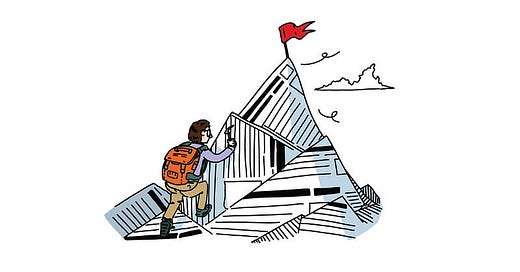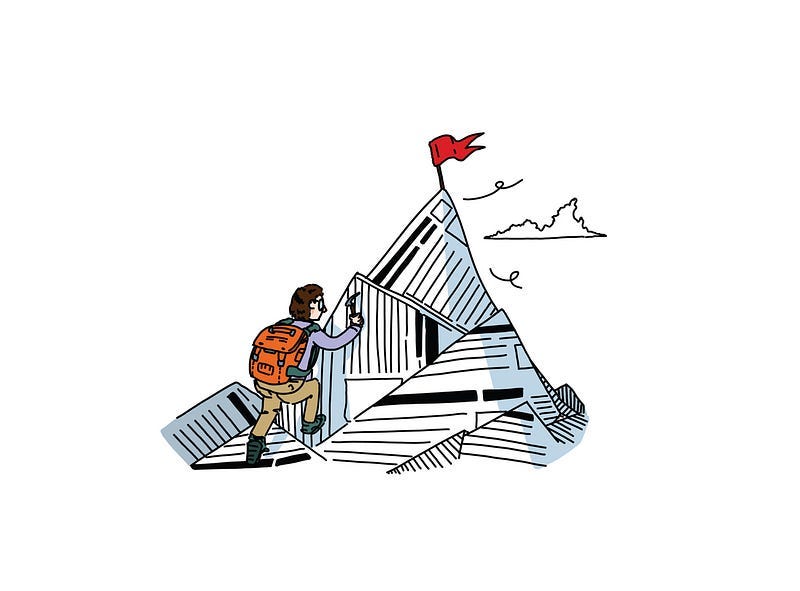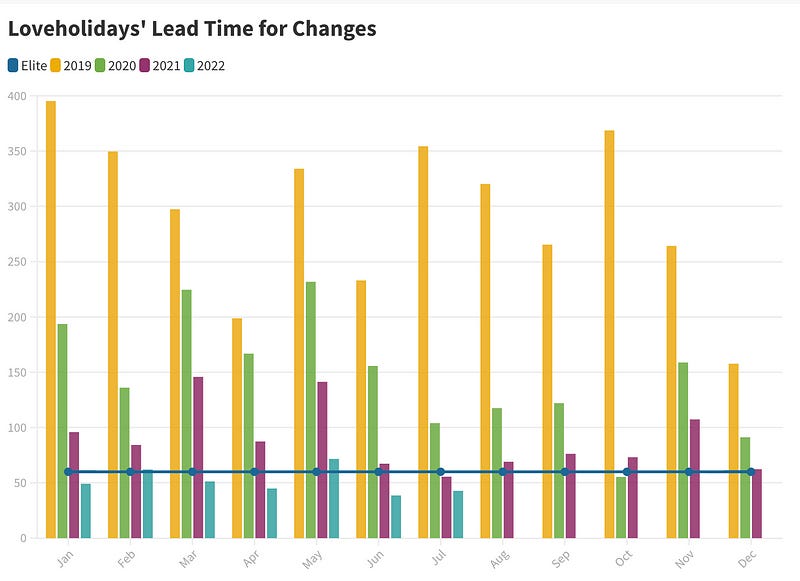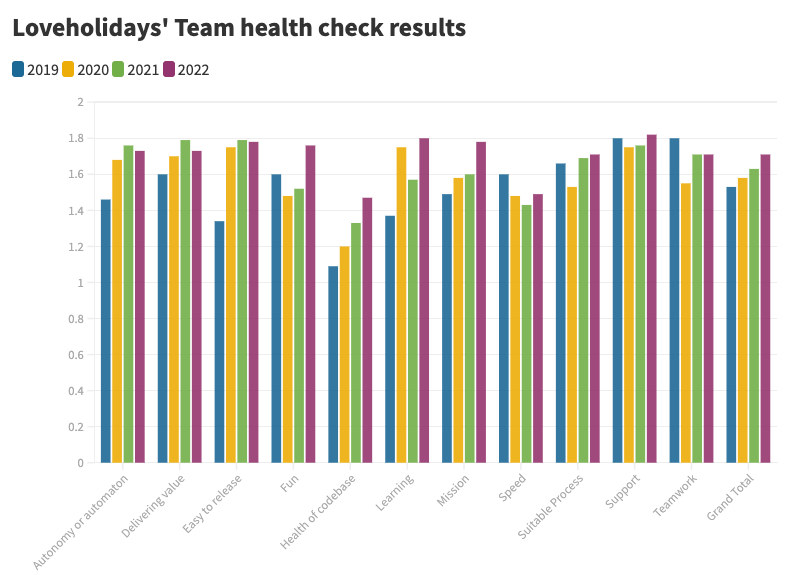Agile needs a story
A friend once told me, “The problem with agile is that it needs a story”. As head of investor relations she was lamenting the fact that…
A friend once told me, “The problem with agile is that it needs a story”. As head of investor relations she was lamenting the fact that, even with great business results, all the work that we had done to improve the company had gone unnoticed. Our incremental approach made it difficult to follow along with the improvements made over time as, by design, there were no ‘Big Bang’ moments where something new was revealed. Instead, things just got consistently better and that was a bit… well… boring.
That observation resonated with the experiences I’d had using agile to help transform various companies’ approach to technology. Sometimes the day-to-day work can feel like a grind, today being only slightly better than yesterday, and it’s easy to miss the impact you are having. Whenever this happened it was disheartening and frustrating but by looking back at what we had achieved, putting it in context, and remembering where we started, we were always shocked at the size of the impact we’d had.
Our inherent biases don’t help with this. The emphasis we place on our most recent experiences (recency bias) means our view of progress is influenced by things that are important right now. We also tend to overvalue innovation in the short term and undervalue its impact over time, meaning we expect to see immediate impact from our work. To quote Anaïs Nin, “We don’t see things as they are, we see them as we are”. This results in a blind spot to incremental progress that you need to work to overcome.
Once this was pointed out it constantly niggled at me. Increasingly I began to see the impact of not having that story (frequency illusion this time) across all parts of the company. However, I felt this most acutely when people outside of the technology team didn’t recognise the impact of an incremental approach on the success of the business and discounted it. It was hard to argue with as we had no evidence of how our approach was influencing our success as a business.
Starting at loveholidays was a fresh opportunity to address this. To try and build a ‘story’ alongside the agile process that puts the changes we are making in context. To be able to deliver technology changes in the right way AND help people, internal and external, to correlate the technology change with the impact on the business.
“Even Rocky had a montage”
I have seen first-hand how a clear organisational narrative can help tie together seemingly disparate threads of work from different teams into something that is compelling and easy to follow. I have also seen how a story by itself is not enough and, without evidence or proof points, quickly becomes inauthentic and disconnected.
Having a narrative and proof points are two elements that our CEO constantly challenges us on. It’s never enough to say things like, “We are a great technology team”. His advice and guidance on the best way to address this has proven invaluable when creating this narrative.
Firstly, to help bring everyone along with the changes you are making, it’s important to be able to explain in simple terms where we are going and why. The narrative itself needs to link to the overarching direction for the business and to connect to business value — not be couched in technical jargon.
Secondly, you should try to prove any statement you make using external benchmarks that are relevant to your business. Objective external standards provide the best chance for people to understand your progress without the need for detailed explanation. They also allow you to track your performance and serve as proof points for your impact as you make progress.
My only addition to this advice is that for this type of narrative to resonate you need to have an opinion. Like Chuck D said, “If you don’t stand for something, you’ll fall for anything.” Defining your a priori assumptions will give your narrative more clarity and also guide you on the metrics you select to measure your impact.
Being able to explain your story and approach simply and measuring your success with external benchmarks helps in a number of ways. When you start, it helps gather support and backing for the future you’re trying to build. As you progress on delivering, it helps to fill in our blind spots by contextualising changes as they happen. It provides opportunity for reflection, like a montage of what’s happened, by creating a shorthand to follow along.
loveholidays’ technology story
For our narrative it’s important to understand that we are a platform business with two sides. We help connect our customers with their perfect holiday and provide our partners with an aggregation of a large amount of demand for their product in one place.
Technology is at the core of our platform and fundamental to each area of our business. To get it right, there are three main aspects that you need to manage as you grow:
People — having the right number of people with the right skills and right level of support
Platform — matching technology investment and capabilities with the maturity of the business
Process — making it easy for teams to do the right things
As a start-up, the company did an impressive job building a business from nothing. Through experimentation and relentless focus, they found a model that not only worked, but became the fastest growing company in the UK. This required a small team with generalist skills to react quickly to the latest opportunity, a platform optimised for experimentation, and processes to support short-term opportunities.
This approach is perfect for a start-up but success brings the privileged challenge of scaling the three areas that are key for technology. Simply put, you need to be able to hire and support a much larger team, ensure you have the specialist skills which can stabilise the platform whilst maintaining its flexibility and, as the organisation grows in size and ambition, have processes that support undertaking more projects of increasing complexity.
We have strong opinions on how this is best achieved. Our collective experiences in addressing similar challenges led us to suggest a different approach that would help us not only maintain but improve our technology capability across each of these areas.
To help clarify this, we captured our approach to technology in a set of five technology principles and also changed how we structured our teams. The approach to teams and processes was important too, as we moved towards building teams around long-lived business problems, rather than projects, to increase autonomy as a foundation to scale.
To track this, we settled on two measures that we could use to show our incremental improvements and tell the story of the developments we were making:
Accelerate / DORA metrics — to prove we are operating at a level we can legitimately claim is elite (correlated with improved performance).
Team health check — a way to track how people are feeling about working here. This provides a self-reported experience and lets us know if we are creating a great environment to work in, whilst allowing us to identify and address any issues or barriers to progress.
With this narrative we were hopeful that, as the approach we took delivered value, the teams and the wider organisation would be able to connect the changes we made to the success of the business.
The story so far…
We have now had our technology story, and associated metrics, in place since 2019. They have been really useful in helping to understand our performance and follow along with the impact we are having. Ultimately what they have shown is that our approach to scaling technology is really paying off.
The Accelerate / DORA metrics are showing, objectively, the impact our principles and process have had:
Deployments were increased by 25% over the course of two years with no growth in team size.
We are getting things into production six times faster with our lead time to deploy decreasing from over six hours to under 40 minutes.
Our investment into scaling our systems meant that during the highest traffic period our systems have ever faced, we had zero down time compared to the frequent outages we faced a few years earlier.
From a team perspective, there is a similar positive story. It’s encouraging that every time we have run the health check, things have continued to improve. Whilst there are fluctuations in some metrics, as is to be expected, the general trend is upwards.
In line with our goals, we are seeing big improvements in autonomy and team alignment with our mission. Our initial push to address the problems with releasing was obvious and investment is starting to show. Also, support for the team remains high and we have also increased the opportunities for learning as we solve harder problems.
What is perhaps most interesting to see here is the perception of moving slower, even against the backdrop of increasing delivery, and also the lack of feeling of teamwork. So we are also able to understand and address some of the areas where we aren’t performing as well as we would like.
These metrics also cover the period of Covid where the travel industry was in turmoil and we had to move to remote working. Our CEO made a courageous decision to continue investing in technology which meant that the teams were able to focus on improvements. Having these metrics in place during this time meant that we had something to measure our performance against even when very few people were booking a holiday. They really helped bring some positivity and a sense of achievement during a very stressful time.
With lockdown behind us and a return to travel in full force, our business is flying, and that decision of continued technology investment is paying off. Without giving too much away, we are performing at levels where we are serving many more customers than ever before. It gives me a huge amount of satisfaction to be able to show, using a range of measures, just what an amazing job our teams have done and how it helps account for the incredible results we are seeing in 2022.
Closing thoughts
Taking my friend’s advice and creating a narrative alongside the agile approach has been really beneficial as we have transformed loveholidays’ technology. By following advice on how best to do this, we now have proof points that validate our principles in objective measures that are industry standards and the experience that people are having working here.
Perhaps best of all, it has helped ensure that the achievements of over the last few years don’t go unnoticed or unrecognised. Even with the tumultuous period we have endured, we can see and follow along with how we are progressing and have conviction that we were doing the right thing. If we hadn’t had all the elements in place, perhaps things would have been very different.
If this is something that you feel would benefit your team, the first steps would be:
Understand your company’s success drivers of the past, present, and what will be needed in the future. Then describe in simple terms how technology will best serve this.
Have an opinion about the approach you are going to take and make this explicit.
Look at how your industry defines ‘good’ to find objectives to measure your success. Put these in place as soon as possible and try not to change them too much.
In general, though, it’s best to remember what Ferris Bueller said, “Life moves pretty fast. If you don’t stop and look around once in a while, you could miss it.”






